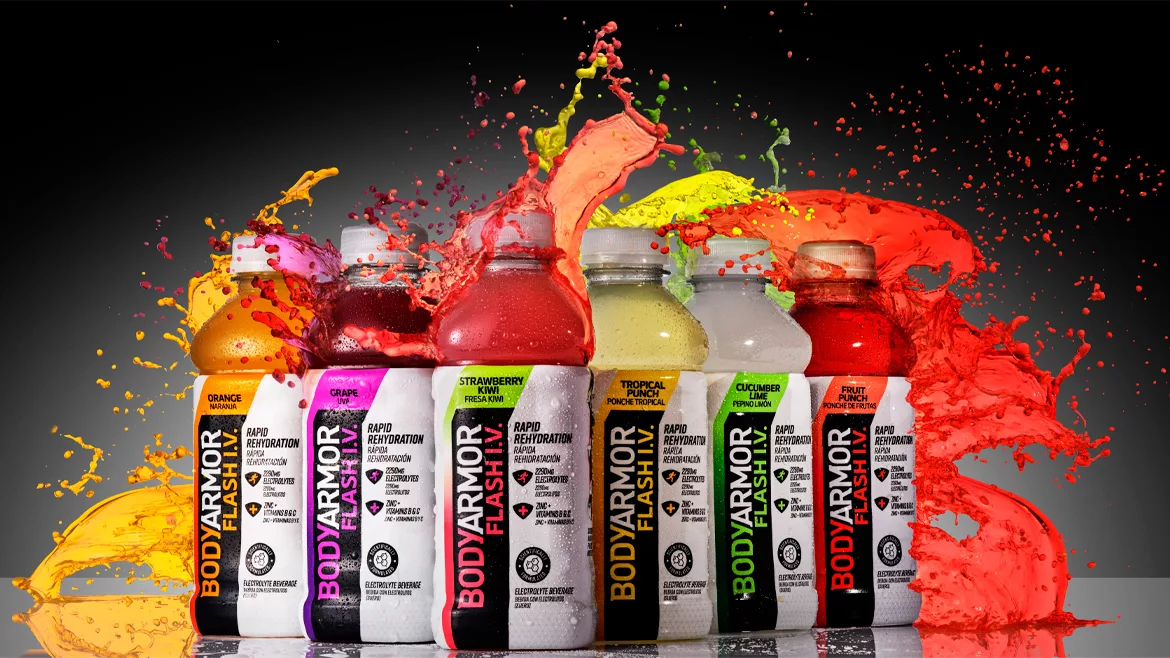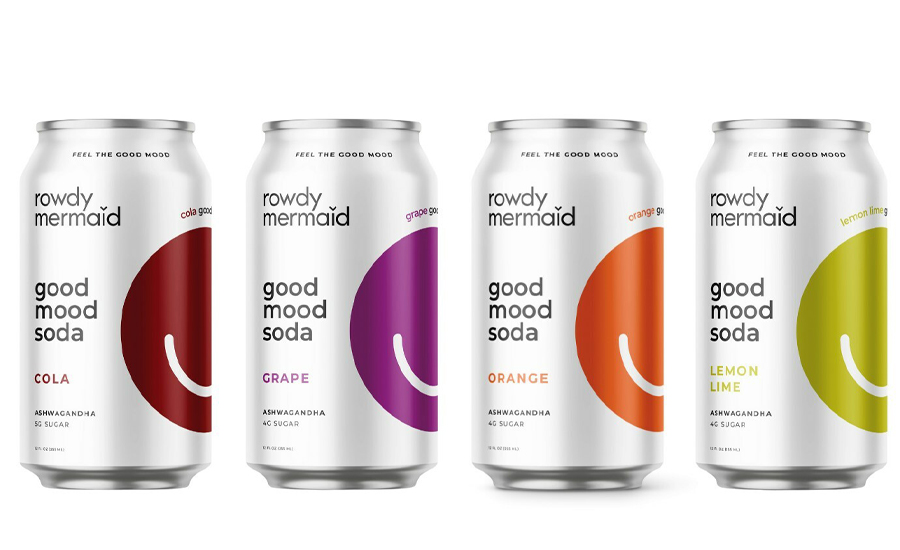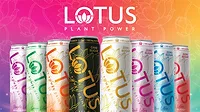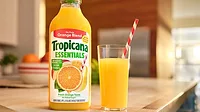Special Report
Functional is fashionable
Beverage-makers continue to meet consumer demands for functional beverages

Image courtesy of BodyArmor
In the Pokémon universe, the creatures go through evolution. Each development is a leap, making the Pokémon stronger and more powerful. These level-ups give the Pokémon new abilities that can be used to fight against and defeat opponents. Sometimes, the Pokémon can only evolve under certain circumstances.
Similar to the way trainers want their Pokémon to level up, consumers are leaning toward beverages that help them level up in various ways.
Gary Hemphill, managing director at New York and Wintersville, Ohio-based Beverage Marketing Corporation (BMC), points to consumer trends that are driving the development of functional beverages.
“The greatest strength in functional drinks continues to be around energy,” he says. “It’s a massive need state that continues to expand as new consumers are attracted to the category. Additionally, marketers have continued to innovate around the energy space, which has bolstered category growth.”
In Mintel’s “Executive Summary: Functional Drinks, US, 2023” report, the Chicago-based research firm examines various consumer trends contributing to functional beverage performance. It mentions the various generations (baby boomers, millennials, Gen X and Gen Z) and notes which factors of functional beverages appeal most to each.
Millennials are most heavily engaged with functional claims, but there is room for improvement among Gen Xers and Gen Z, according to the report.

“Differences that reflect age-related perspectives and priorities regarding health emerge, seen through varying tendencies toward whim purchase as well as long-term versus short-term health,” it states. “Brands can tap into each generation’s interests to bolster current engagement by communicating the value of consistency and proactivity, wherever they currently stand.”
The report also notes that, in regard to consumer interest in functional beverages, finances are a factor and that “flavor paves the way.” Flavors are a way for brands to communicate function and benefits of consistency, the report states, and connecting flavors with function justifies consumer craving satisfaction.
“Functional drinks are a rapidly evolving space, challenging brands to keep pace with emerging trends without losing sight of the basics,” said Adriana Chychula, Mintel analyst for food, drink and nutrition, in the report. “In any case, flavor serves as an introduction; working backwards to connect related ingredients to micronutrients and their broader functions can satisfy thirst, with science-backed wellness to justify whim purchase.”
A July blog post by Cara Rasch at Freedonia Group, titled “Beverage trends show consumers are increasingly seeking out functional ingredients,” explores the various ways functional beverages sit amongst consumers.
Rasch notes that the pandemic changed consumer behavior, especially when it comes to improving their health and preventing illness.
“Consumers have been concerned about their own health and the health of others, which caused some consumers to buy food and beverage products thought to boost immunity or otherwise improve health because they believe in the concept of ‘food as medicine,’” she explains in the post. “For some, the pandemic inspired more focus on healthy living in general — regular exercise, more whole foods, etc. — and not just susceptibility to illness.”
“Functional drinks are a rapidly evolving space, challenging brands to keep pace with emerging trends without losing sight of the basics.”
— Adriana Chychula, analyst, food, drink and nutrition at Mintel
Rasch adds that functional beverages were no exception to price increases because of inflation, but still saw “especially fast gains” from 2020 to 2022 “due to the above factors as well as new product introductions and increased consumer awareness and adoption during that time.”
Similar to BMC’s Hemphill, Rasch points to energy as being a major draw for consumers to choose functional beverages. She suggests that functional beverage-makers can find success with products that target gamers.
“Gaming has a young demographic, and participants have special needs and wants in terms of food and beverages, including products that enhance and elevate mental and physical performance and deliver functional attributes such as hydration, energy, sustained nutrition, mental acuity, focus, mood elevation and stress reduction,” she states in the post. “Marketers are increasingly designing beverages with these attributes and creating brands that resonate with this audience.”
As people continue to pursue more at-home activities, Rasch says this gives companies the opportunity to deliver functional beverages that don’t just give consumers energy to stay awake, but also provide cognitive function, focus and mental recovery.
BMC’s Hemphill spotlights the demand for energy, but notes other attributes are resonating with consumers.
“Energy is by far the most developed [functional attribute] yet, [and] has much continued growth potential,” he says. “Other areas, like immunity, relaxation and digestive health, all have promise.”
Hemphill adds that younger consumers tend to be open to getting benefits from beverages, although demographics of functional benefits vary by category.
“Virtually all beverage categories have seen innovation that’s embraced functional product attributes, but some have been more successful than others,” he explains. “Some categories’, like energy and sports, primary focus is functional. Other categories, like carbonated soft drinks, have innovated into functionality.”
Additionally, Hemphill says that convenience “plays a key role” in the success of all refreshment beverages, noting that it takes on a variety of forms, from packaging to where the products are purchased.
In her Freedonia blog post, Rasch examines how consumers’ perception of caffeine can vary depending on age. She says that younger consumers who are gamers tend to gravitate toward beverages with higher caffeine content, such as Prime Energy, meanwhile older consumers do not want as much caffeine.
“The caffeine content in Prime Energy matches caffeine found in servings of popular energy drink brands such as 5-hour Energy and Ghost,” Rasch states. “Young adults who are primary users of energy drinks (particularly those age 18-24) are less likely to be worried about caffeine or its potential health effects and more likely to tolerate larger amounts of caffeine, so high caffeine drinks are often sought out by them.”
The future of functional beverages
Going forward, Mintel’s report anticipates that consumers will continue to engage with functional beverages as their budgets allow.
“Functions related to tangible, everyday human needs proliferate, seen in hydration’s wide reach, though more niche claims can sustain their own relevance with marketing toward consistency within their respective demographic targets,” it states. “The gap between self-reported functional drink consumption and claim use opens opportunity for brands to attract consumer interest in their offerings to stand out in the increasingly saturated market.”
Mintel’s report also notes that beverage-makers need to make clearer connections between ingredients to function and wellness. It suggests that companies also emphasize consistency.
“Doubling down on reinforcing the benefits of consumption consistency will support deeper engagement among current user bases, a complementary tactic to recruiting new users,” the report states.
Further, the report suggests that companies not lose sight of the basics when it comes to nutritional appeal, noting that both known and niche functional ingredients would benefit from communications “centered on improved results through efficacy.”
“Refreshment beverages with functional beverages are likely to outperform the overall beverage market as consumers increasingly reach for better-for-you products,” BMC’s Hemphill says.
Looking for a reprint of this article?
From high-res PDFs to custom plaques, order your copy today!






